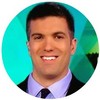The idea was born out of Schwarz, Volante, and Bayne's frustration with the multibillion-dollar college sports industry, in which NCAA member schools agree not to pay athletes instead of competing and bidding for their services in a free market the way every other industry works, and the way campus athletics work if you're a coach or athletic director.It also stems from the failure of recent legal challenges to amateurism. A class-action lawsuit brought against the NCAA by former University of California, Los Angeles basketball star Ed O'Bannon over the use of athletes' names, images, and likenesses ended with federal judges finding that the association violates antitrust law, but also ruling that the NCAA can continue to prohibit player pay.
Do HBCUs really benefit by being part of the NCAA cartel? Photo by Bob Donnan-USA TODAY Sports
HBCUs typically can't afford for their athletes to attend summer classes. They have far fewer academic advisers to provide oversight. Unlike power conference schools, HBCUs can't afford enough NCAA compliance officers to effectively navigate waivers for exemptions, or offer guaranteed scholarships that allow athletes who leave school early to return to get their degrees and boost a slumping score.
Howard has two full-time academic advisers for approximately 350 athletes. At Morgan State, the only academic adviser listed on the athletic department's online staff directory is also an assistant cheerleading coach. But schools in the power five conferences often have an academic counselor devoted to football and men's basketball and one for every three to four of the institution's other sports.
Schwarz and his partners believe they can provide one. A basketball league featuring the nation's top collegiate talent—the future NBA players who currently attend schools like Duke University and the University of Kentucky—could provide a much-needed shot in the arm to HBCU athletics as a whole. It also could benefit member schools in general through what some economists have called "the Flutie Effect," in which high-profile athletic success spurs a virtuous, school-lifting cycle of better branding, improved alumni giving, increased and more selective enrollment, and more overall excitement."There's nothing that George Mason could have done in American society that is equivalent to the buzz it got from its run [to the Final Four in 2006]," says Bayne, the author and league co-founder. "No website, no brochure, no famous alum. I've worked at places where people filling out their NCAA tournament brackets had Coppin State or Hampton as a No. 15 or 16 seed and didn't know what those schools were. So the hope is that in the long run, the entire student body [of the HBCUs] will benefit in indirect ways."
The proposed HBCU league is looking for socially conscious investors. Photo by Cary Edmondson-USA TODAY Sports
For now, the league is just a concept, a 22-page outline that anyone can read online. Cash, schools, and athletes are the essential elements, but it also needs lawyers, marketers, operations staff, an entire professional infrastructure. More of everything.
A page from the HBCU league business plan. Courtesy Andy Schwarz
